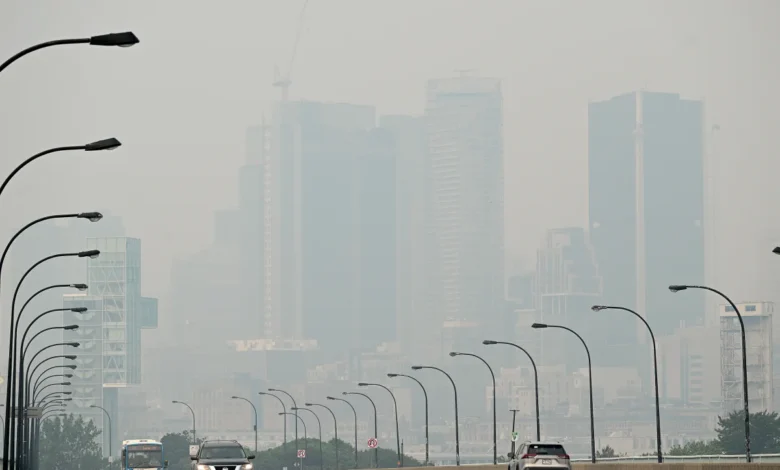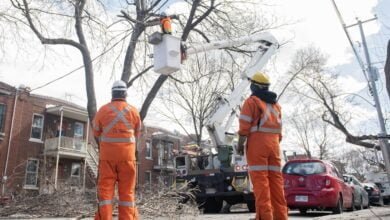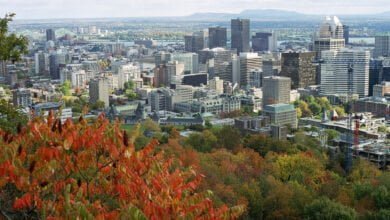
As the sun rises over Montreal, an ominous haze blankets the city, signaling the arrival of a smog warning. Smog, a hazardous combination of smoke and fog, has become a pressing environmental concern for urban areas like Montreal. This piece will delve into the causes and effects of smog, explore the reasons behind the current smog warning in the Montreal area, and provide valuable advice on how individuals can contribute to mitigating its impacts.
Understanding Smog
What is Smog?
Smog is a term used to describe a visible, toxic blend of smoke and fog that hangs low in the atmosphere. It is primarily composed of pollutants such as nitrogen oxides (NOx), volatile organic compounds (VOCs), and particulate matter (PM). These harmful substances arise from various sources, including vehicle emissions, industrial processes, and agricultural activities.
Types of Smog
There are two main types of smog: photochemical smog and industrial smog. Photochemical smog forms when sunlight interacts with pollutants, leading to the production of ground-level ozone. Industrial smog, on the other hand, is a result of the burning of fossil fuels in industries and power plants, leading to sulfur dioxide (SO2) emissions.
The Smog Crisis in Montreal
Causes of Smog in Montreal
The city’s geographical location, high population density, and industrial activities contribute significantly to smog formation. Montreal’s sprawling urban landscape creates “heat islands,” where heat-trapping concrete and asphalt amplify smog creation during hot weather.
Impact on Public Health
The health implications of smog are profound. Fine particulate matter and ozone can penetrate deep into the respiratory system, causing respiratory illnesses such as asthma, bronchitis, and even cardiovascular diseases. Vulnerable populations, such as children, the elderly, and those with pre-existing respiratory conditions, are at higher risk.
Environmental Consequences
Smog not only affects human health but also poses risks to the environment. The deposition of pollutants in the soil and water can harm plant and animal life, while acid rain resulting from smog exacerbates damage to forests, lakes, and aquatic ecosystems.
The Smog Warning and Its Implications
Issuing a Smog Warning
The issuance of a smog warning is a proactive measure taken by environmental authorities to protect public health during periods of elevated smog levels. When meteorological conditions, such as temperature inversions, trap pollutants close to the ground, smog concentrations can reach dangerous levels, necessitating a warning.
Government Response
In response to the smog warning, the Montreal government implements measures to mitigate the impact. These may include restricting certain industrial activities, urging residents to reduce driving and emissions, and providing public transportation incentives.
Public Awareness and Responsibility
During a smog warning, it is crucial for the public to be informed and take responsible action. Staying informed through media updates and government alerts empowers individuals to make conscious decisions to protect themselves and their community.
How Individuals Can Combat Smog
Reduce Vehicle Emissions
Driving less, carpooling, and using public transportation or cycling can significantly reduce vehicle emissions, a major contributor to smog formation.
Embrace Clean Energy
Supporting renewable energy sources and advocating for their implementation can help reduce the reliance on fossil fuels, thereby decreasing smog formation.
Conserve Energy at Home and Work
Simple actions such as turning off lights, using energy-efficient appliances, and reducing air conditioning usage contribute to a cleaner environment.
Plant Trees and Maintain Green Spaces
Trees and vegetation play a vital role in absorbing pollutants and improving air quality. Participating in community tree-planting initiatives can make a positive impact.
The smog warning in Montreal serves as a stark reminder of the environmental challenges that urban centers face. Smog not only threatens public health but also puts a strain on ecosystems and natural resources. By understanding the causes and consequences of smog and taking individual and collective actions, residents of Montreal can pave the way for a cleaner, healthier, and more sustainable future. Embracing renewable energy, conserving resources, and working together to reduce emissions will contribute to mitigating smog’s harmful effects and fostering a greener, cleaner Montreal for generations to come.
Also read: What Hydro-Québec could do to prevent another mass outage?



